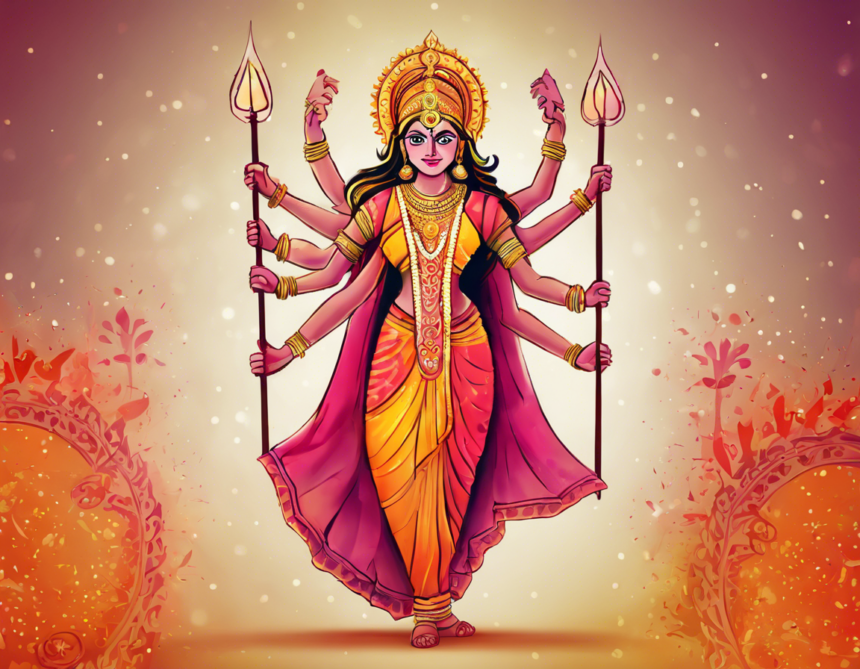As the auspicious occasion of Dussehra approaches, it brings forth a wave of joy and festivity in the air. Also known as Vijayadashami, Dussehra is a significant Hindu festival that symbolizes the victory of good over evil. It is celebrated with great fervor and enthusiasm in various parts of India and by Indians all around the world.
Dussehra falls on the tenth day of the Hindu calendar month of Ashwin (usually in September or October) and marks the end of the Navratri festival. The festival holds immense cultural and religious significance and is observed in different ways across the country. From Ram Leela performances to Ravan Dahan (burning effigies of Ravana), the festival is rich in traditions and rituals.
The Legend of Dussehra:
The most popular tale associated with Dussehra is the epic Ramayana, which narrates the story of Lord Rama’s victory over the demon king Ravana. According to the legend, Ravana, with his ten heads representing his immense knowledge and power, had abducted Sita, Lord Rama’s wife. The abduction led to a fierce battle between Rama and Ravana, culminating in Rama’s victory and the destruction of Ravana.
Dussehra Celebrations:
Dussehra is celebrated in various ways across India, each region adding its unique flavor to the festivities. In the northern parts of India, especially in states like Uttar Pradesh, Madhya Pradesh, and Haryana, grand Ram Leela performances are organized, depicting the life events of Lord Rama. The play culminates with the enactment of Ravana’s burning, symbolizing the victory of good over evil.
In the eastern state of West Bengal, Dussehra coincides with Durga Puja, a ten-day festival dedicated to the worship of Goddess Durga. Elaborate pandals (temporary structures) are set up across the state, showcasing stunning idols of the goddess. On the final day, idols are immersed in water bodies, marking the end of the festival.
In the southern states of Karnataka and Tamil Nadu, Dussehra is celebrated as Dasara. The Mysore Dasara is particularly famous, with the royal family of Mysore leading a grand procession through the city. The procession includes elaborately decorated elephants, folk dancers, and music bands, attracting thousands of spectators.
Dussehra Significance:
Dussehra holds immense significance beyond its cultural celebrations. It serves as a reminder of the triumph of righteousness over evil and the importance of upholding moral values. The festival encourages people to strive for righteousness, truth, and goodness in their lives, emulating the ideals set by figures like Lord Rama.
FAQs about Dussehra:
- What is the significance of burning effigies during Dussehra?
-
Burning effigies during Dussehra symbolizes the destruction of evil forces represented by characters like Ravana. It signifies the triumph of good over evil.
-
Why is Dussehra also known as Vijayadashami?
-
Dussehra is known as Vijayadashami, which translates to “the tenth day of victory.” It signifies Lord Rama’s victory over Ravana on the tenth day of the battle.
-
How long does the Dussehra festival last?
-
Dussehra is a one-day festival that falls on the tenth day of Ashwin month. However, the festivities leading up to Dussehra, such as Navratri, may last for nine days.
-
Are there any specific food items associated with Dussehra celebrations?
-
Different regions in India have their traditional dishes for Dussehra. In North India, people prepare dishes like paneer, kachori, and jalebi as part of the festival feast.
-
Is Dussehra only celebrated in India?
- While Dussehra is primarily celebrated in India, Hindu communities around the world also observe the festival with cultural performances, prayer ceremonies, and social gatherings.
In conclusion, Dussehra is more than just a festival; it is a reminder of the eternal battle between good and evil and the eventual triumph of righteousness. As we celebrate Dussehra this year, let us embrace the values of truth, courage, and integrity, just like Lord Rama, and strive to overcome the negativity and darkness within and around us. Wishing you a joyous and prosperous Dussehra!


Leave a Reply